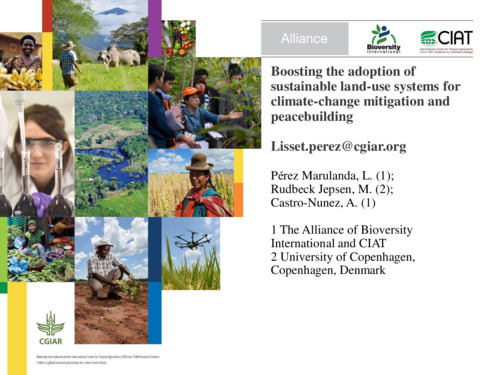Boosting the adoption of sustainable land-use systems for climate-change mitigation and peacebuilding
Sustainable land-use systems (SLUS), such as agroforestry with cocoa, implemented with organic fertiliser, with prescribed post-harvest practices and rainwater irrigation, can potentially increase farm productivity, while reducing pressure on natural resources by decreasing deforestation and providing legitimate incomes for rural households. SLUS also contribute to peacebuilding by providing sustainable income sources and enhancing social cohesion. Despite evidence of their potential and global efforts to promote their use, SLUS adoption rates remain low. Building on traditional ex-post generic adoption studies, we identify the enabling factors for farm-level transitions to SLUS in Colombia to propose policy design that will boost SLUS adoption in areas that are conflict affected and exposed to deforestation. We surveyed a sample of 922 cocoa producers in conflict-affected areas prone to deforestation. To reveal SLUS adoption factors, we (i) classified farmers according to number of sustainable methods applied; (ii) estimated an ordered probit econometric model; and (iii) assessed existing policies to promote cocoa production systems in Colombia, comparing their alignment with the adoption factors identified. We find a mismatch between farm-level adoption factors and policies promoting SLUS in Colombia. The principal factors enabling farm-level adoption of sustainable cocoa production system depend on: (i) cocoa plantation age; (ii) technical assistance provided; (iii) farmers’ social networks; and (iv) farmer-to-farmer interaction. National policies to promote sustainable cocoa are mostly oriented towards (i) renewing and rehabilitating established farming areas (directly related to crop age); (ii) expanding cocoa agroforestry systems; and (iii) establishing zero-deforestation cocoa production agreements. Our results indicate that to achieve wide-scale SLUS adoption, policies should focus on: (i) capacity building through technical assistance and strengthening farmers’ associations; (ii) strengthening social network structure to generate cascading information and social interactions between producers, and knowledge sharing; (iii) land-use conversion instead of expansion, for example from pastures to cocoa.

